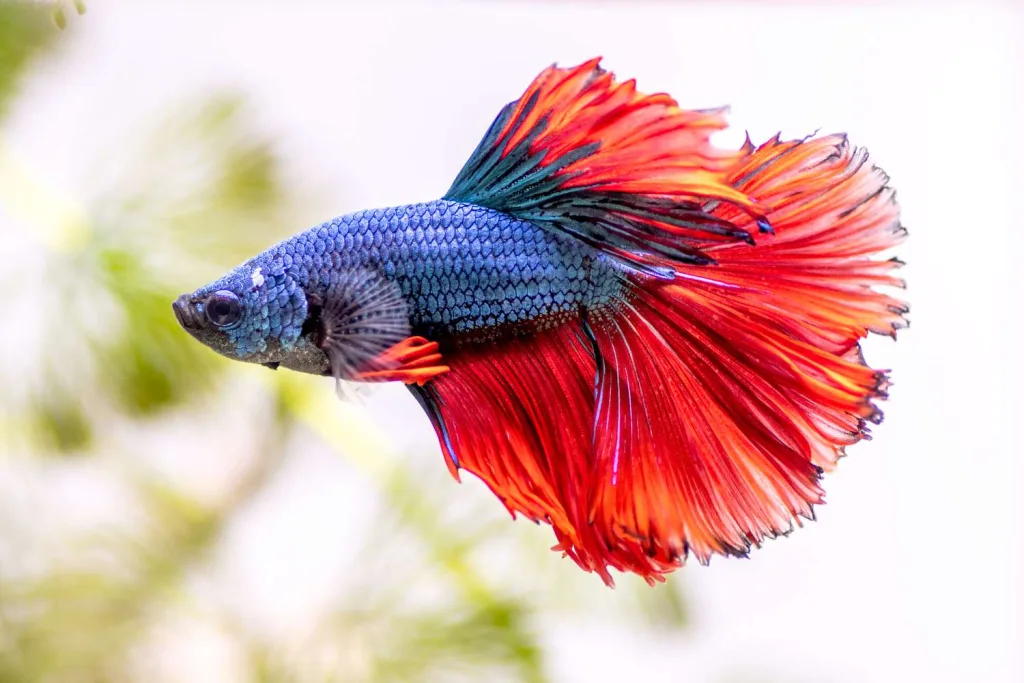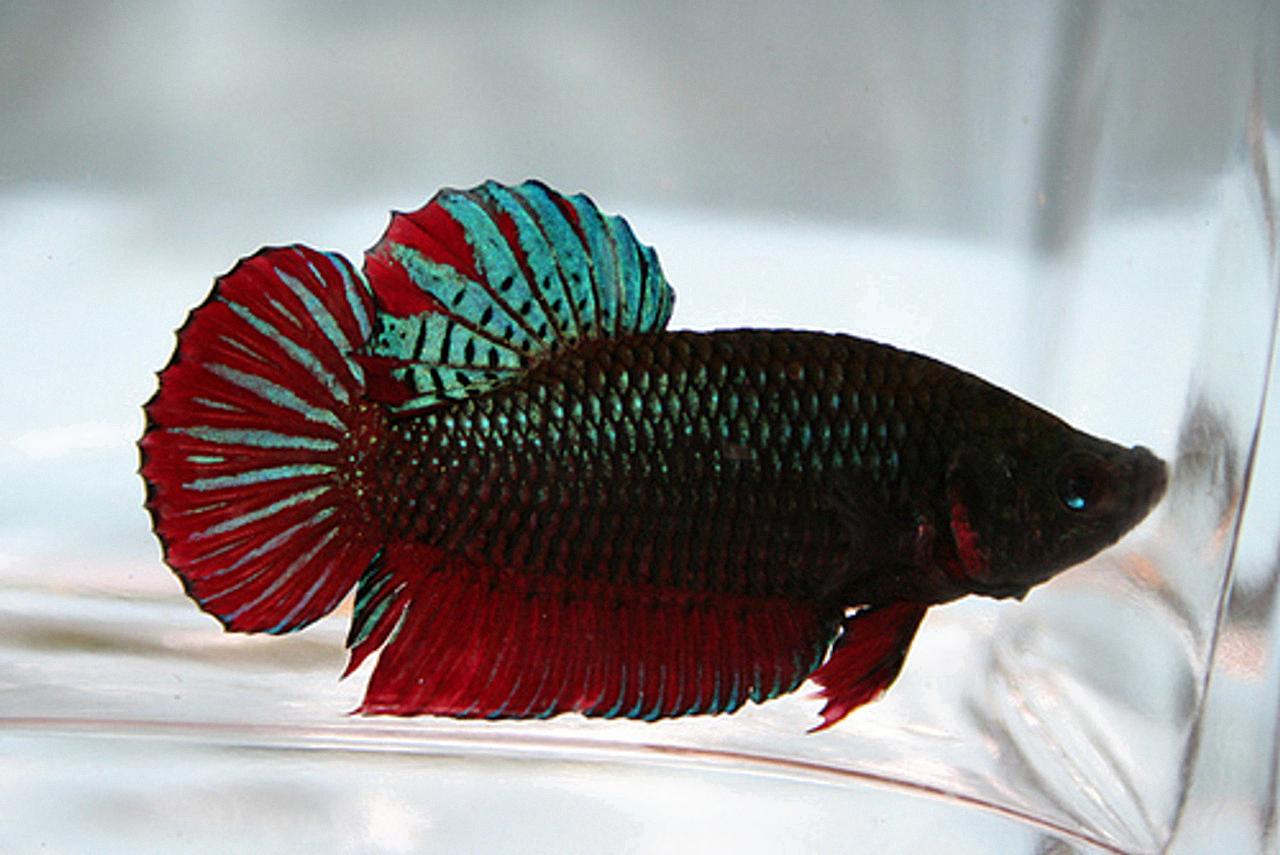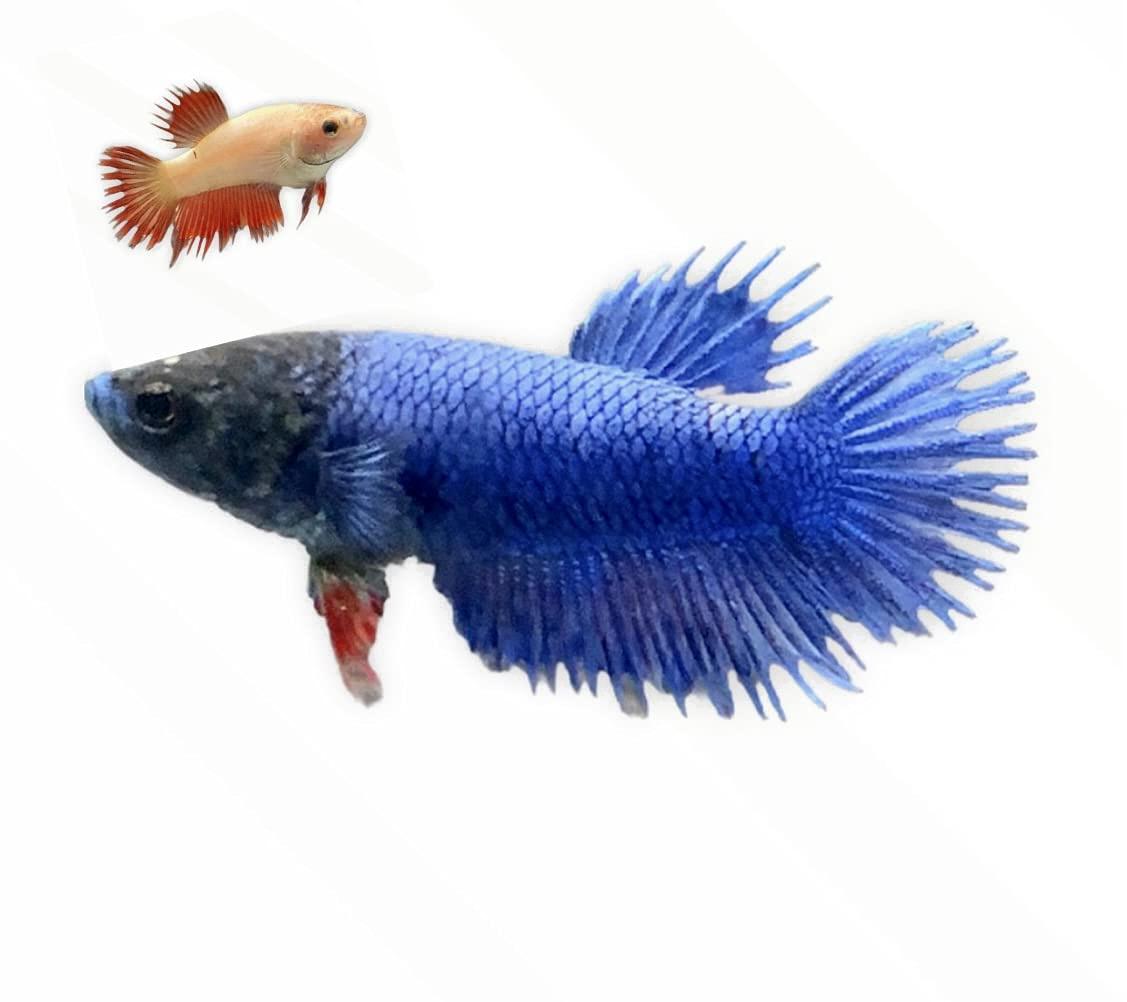Betta Fish, also known as Siamese fighting fish, are beautiful and exotic freshwater aquarium fish that are popular with hobbyists around the world. Betta Fish come in a variety of colors and patterns and can make an attractive addition to any tank.
When considering adding one of these captivating creatures to your home aquarium, it is important to understand their needs so you can ensure they stay healthy and happy. In terms of housing, Bettas need at least two gallons of water in a tank that is well-filtered and heated. They prefer slightly acidic water (6.5-7.4 pH) and temperatures between 75-85°F (24-29°C).
Bettas should not be housed with other aggressive fish as they will fight each other—hence the name “fighting fish”. Rather, they should be kept with non-aggressive species such as danios, tetras, guppies, mollies and platies. When selecting tank mates for your Betta Fish always keep in mind the size of the tank it will be living in; overcrowding can cause stress on all species living together.
In terms of food, Bettas are carnivores and should be fed a high-protein diet consisting mainly of pellets or flakes supplemented with freeze dried bloodworms or brine shrimp treats a few times per week. Be sure to only give them what they can eat in 2 minutes as uneaten food can quickly foul the water quality if left unchecked.
Regular weekly water changes are essential for keeping your Betta Fish healthy while also maintaining good water quality in their habitat; 25% should be done every 7 days or so using a gravel vacuum cleaner to remove solid waste trapped within the substrate layer (gravel).
Although Betta Fish are relatively low maintenance compared to other species it is important to remember that they do require special care if you want them to thrive in their environment; setting up a proper habitat for them before introducing them into your aquarium is key for their wellbeing!
Appearance of Betta Fish Poop
Betta fish poop is typically round in shape and relatively small, ranging from a few millimeters to half a centimeter. The color of the stool can vary depending on the type of food they eat, but it should generally be a shade of brown or tan. It is not uncommon for betta poo to have a tint of red, which can be attributed to the coloring used in some betta foods. If you notice your betta’s stool is white or yellow, this could be an indication that your fish is ill and should be seen by a veterinarian.

Frequency of Betta Fish Poop
Betta fish typically poop between 5-6 times a day when provided with a nutritious diet and an appropriate amount of food. It is important to remember that in the wild, Betta’s may not have regular access to food, so they tend to over-eat when given the opportunity. To ensure your Betta stays healthy, feed them small portions of high-quality fish food 2-3 times per day. Remove any uneaten food from the tank after 10 minutes to prevent pollution of the water.
Observing Betta Fish Poop
Yes, you can see betta fish poop in your tank. It will typically accumulate at the bottom of the tank and may be mistaken for uneaten betta pellets because it tends to be clumpy and more round than long and stringy. Betta fish produce quite a bit of waste, so it’s important to ensure that your tank is equipped with a filter and your water is changed regularly to keep ammonia levels from rising too high. This will also help keep your betta fish healthy since ammonia poisoning can be very dangerous for them.
Signs and Symptoms of Intestinal Issues in Bettas
Your betta fish may have poop hanging due to constipation, whch is a common ailment among bettas. Constipation occurs when your fish isn’t able to digest their food properly and the undigested food builds up in their intestines, causing them to become bloated and unable to pass the waste. Other common causes of this symptom include a parasitic infection or an issue with the swim bladder, which affects your fish’s ability to move properly. In some cases, water quality can also be a factor, so be sure to keep your tank clean and well maintained. If you suspect constipation, you can try feeding your betta less food or offering foods that are easier for them to digest, like frozen or live bloodworms or brine shrimp. Additionally, it’s important to keep an eye on your fish and look out for any other signs of illness, such as lethargy or loss of appetite. If the issue persists after trying home remedies, it’s best to take your fish to a qualified veterinarian for diagnosis and treatment.
Signs of a Healthy Betta Fish
Signs of a healthy betta fish include bright, vibrant colors; good appetite; alertness and active swimming; smooth, shiny scales; and clear eyes. They should also have a full, rounded body shape with no signs of protruding bones or sunken areas. Healthy bettas should exhibit strong fin development with no rips or tears. Feces should be light brown in color and their gills should be pinkish-red in color. Additionally, their behavior should be active and inquisitive, exhibiting curiosity when you approach the tank.

Source: petzonesd.com
Assessing the Health of Fish Poop
You will know if a fish’s poop is healthy by looking for certain characteristics. Healthy fish feces should appear as short, cylindrical shapes that sink to the substrate quickly. It should also be a uniform dark brown color and consist of both solid and liquid components. If you observe any stringy, white or otherwise abnormal-looking feces, then the fish may be constipated and require medical attention.
Frequency of Feeding for Bettas
Yes, bettas need to be fed every day. Providing food for a betta twice a day ensures that they are getting all the nutrients they need. In the wild, bettas eat small insects and other food items throughout the day. To mimic this natural behavior in captivity, it is best to feed them two separate meals per day. Feeding a betta only once a day can cause nutritional deficiencies, as well as over-eating whch can lead to digestive issues or obesity. When feeding your betta, give them no more than what they can consume in two minutes – this will help prevent uneaten food from polluting their tank water and causing an ammonia spike.
Feeding Frequency for Betta Fish
Yes, betta fish should generally be fed every day. However, it is important to ensure that you are not overfeeding your betta fish. It is recommended to feed your betta two to four pellets once or twice per day, or substitute with freeze-dried or fresh food 1 to 2 days per week. This will provide a balanced diet and help keep your betta fish healthy and active.
What Animals Feed on Betta Fish Poop?
Betta fish poop is not typically eaten by any other fish in an aquarium. However, many species of shrimp are well-known for their scavenging behavior and will eat the poop of other fish, including betta fish. Additionally, some species of plecos have been known to eat betta fish poop. In order to ensure that your betta’s waste is removed from the tank, a gravel vacuum should be used when performing regular tank maintenance.

Source: amazon.com
Signs of an Unhappy Betta Fish
An unhappy betta fish will look dull, with a loss of vibrancy in its colors. Stress stripes may appear on its side, which are often referred to as “stress stripes” and can be an indicator of stress or depression. Additionally, the fish may act differently; it may become lethargic and inactive, spending more time at the bottom of its tank. It may also become aggressive and start to attack its own reflection in the tank.
Conclusion
In conclusion, betta fish poop is usually round in shape and small. The color is typically brown or tan, but can have a tint of red from the coloring in their food. Betta fish poop between 5-6 times a day when they are fed properly. If your betta’s poop appears white or yellow, this could be a sign of illness and shoud be addressed with your vet. Constipation is the most common cause of hanging betta fish poo and should be treated accordingly. It is important to take note of your betta’s pooping habits and any changes in order to ensure that they remain healthy and happy!
